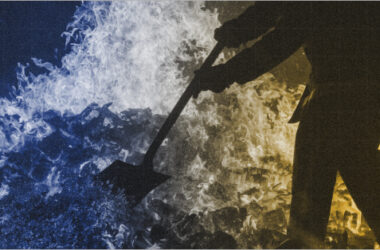Fire Insurance is essential for safeguarding property and assets against financial losses caused by fire-related damages. In India, Fire Insurance policies are widely used by businesses and homeowners to ensure protection from fire incidents. However, understanding the claim settlement process in Fire Insurance is crucial for policyholders to ensure they receive compensation swiftly and efficiently. This blog provides an in-depth explanation of a typical Fire Insurance claim settlement process in India, covering key steps, required documentation and essential tips for a smooth experience.
The Importance of Understanding the Fire Insurance Claim Settlement Process
The claim settlement process is one of the most critical aspects of Fire Insurance, as it directly affects the policyholder’s ability to recover from financial loss. Timely and accurate filing of a Fire Insurance claim ensures faster compensation and reduces financial strain. In India, the Insurance Regulatory and Development Authority of India (IRDAI) sets guidelines for insurers to ensure a structured and fair claim settlement process, but individual claim assessments are carried out by IRDAI-licensed surveyors.
To facilitate smooth Fire Insurance claim settlement, it is important to follow the correct procedure, submit necessary documents and maintain transparency in communicating with the insurance provider.
Steps Involved in the Fire Insurance Claim Settlement Process
1. Estimate the Losses
Once a fire occurs, policyholders should document the damage with photographs, videos and written records of lost/damaged property. A written inventory of damaged or destroyed items should also be prepared, including descriptions, approximate purchase dates and estimated values. If receipts, invoices or previous appraisals are available, these can be used to support the valuation of items. Consulting a contractor or property damage specialist can provide an accurate estimate of repair or rebuilding costs.
Additionally, policyholders should review their Fire Insurance Policy to understand the coverage limits, exclusions and the method of reimbursement (actual cash value or replacement cost). Keeping records of all temporary repairs, cleanup expenses and accommodation costs is essential, as these might be reimbursable under the policy.
2. File Fire Insurance Claim Immediately
The next step is to notify the insurance company immediately after the fire occurs. Most Fire Insurance policies in India require the policyholder to inform the insurer or file a Fire Insurance claim within a stipulated time frame, usually within 24 to 48 hours of the incident. Some policies allow up to 7 days for reporting. Delayed intimation can lead to complications and may result in the rejection of the Fire Insurance claim.
Ensure that you provide preliminary details about the fire, including:
- Date and time of the incident.
- The cause of the fire (if known).
- The extent of the damage.
You can notify the insurance provider via phone, email or an online claim form, depending on the policy’s procedures.
3. Lodging a Police and Fire Department Report
If the fire is suspected to be due to arson, criminal intent or third-party negligence, filing a police report (FIR) is necessary. Otherwise, the fire department’s report is usually sufficient. The fire department will provide a detailed report outlining the cause of the fire and the extent of the damage. Both the police report and the fire department’s report are important documents required during the claim settlement process.
4. Surveyor Appointment and Inspection
After receiving your Fire Insurance claim intimation, the insurance company will appoint a licensed surveyor to assess the extent of the damage and determine the validity of the claim. As per IRDAI regulations, insurers should appoint a licensed surveyor within 72 hours of receiving the claim. However, the actual appointment timeline may vary depending on the complexity and size of the claim.
The surveyor’s role is to:
- Investigate the cause of the fire.
- Assess the damage to the insured property.
- Estimate the monetary loss incurred by the policyholder.
- Verify that the claim aligns with the coverage of the policy.
During the inspection, the surveyor may request various documents related to the property, fire incident and Fire Insurance Policy, which are discussed below.
5. Submission of Required Documents
To facilitate the claim process, the policyholder must submit several documents to the insurance company and the surveyor. Essential documents required for the Fire Insurance claim process include:
- Policy Document: A copy of the original Fire Insurance Policy.
- Claim Form: The official claim form provided by the insurer, duly filled and signed by the policyholder.
- Fire Department Report: The report from the local fire department, confirming the cause and extent of the fire.
- Police Report (if applicable): A First Information Report (FIR) from the police detailing the incident, if the fire involved suspected criminal activities.
- Surveyor’s Report: The final report prepared by the surveyor assessing the damage and monetary loss.
- Proof of Ownership: Documents verifying the ownership of the insured property or assets damaged in the fire.
- Invoices and Bills: For damaged or destroyed assets, invoices and purchase bills will be required to verify their value.
- Repair Estimates: If any repairs are undertaken post-fire, repair estimates and invoices should be submitted.
Submitting these documents promptly ensures faster processing of the claim. In case of missing documents, the insurance company may request additional information or verification before proceeding with the settlement.
6. Claim Assessment and Settlement
Once the surveyor has completed the inspection and submitted the final report, the insurance company will evaluate the findings. The insurer’s decision to accept or reject the claim will be based on the following factors:
- Whether the fire falls within the scope of the Fire Insurance Policy.
- The authenticity of the claim and documents submitted.
- The extent of the damage and whether it aligns with the policy’s terms and conditions.
Once all required documents are submitted, the insurer is required to process and settle the claim within 30 days, provided there are no disputes or additional requirements.
7. Claim Settlement Offer
The insurance company typically makes a settlement offer based on its evaluation of the damages and the terms of the policy. The offer details the amount allocated for structural repairs, personal property replacement and any additional living expenses. If the policy provides for actual cash value (ACV), depreciation is subtracted from the item’s value, while a replacement cost value (RCV) policy covers the full cost to replace or repair items.
8. Claim Amount Issuance
Once the insurer approves the claim, the payment is typically made via bank transfer or cheque. The amount payable depends on:
- Sum Insured: The maximum coverage provided by the Fire Insurance Policy.
- Insurable Interest: The value of the insured property or assets.
- Deductible: The amount that the policyholder must bear before the insurance company initiates the claim settlement process.
- Average Clause: If the sum insured is lower than the actual value of the insured property, the claim payout is proportionately reduced to match the level of insurance.
9. Claim Process Closure
Before closing the claim, the insurer may require the policyholder to sign a Final Settlement Form or a discharge voucher, confirming acceptance of the compensation amount. Once this is done, the claim is officially closed.
Tips to Maximise Your Claim Settlement
- Read and Understand the Policy: Make sure you thoroughly understand the terms, conditions and exclusions of your Fire Insurance Policy.
- Maintain Accurate Documentation: Keep all property-related documents, purchase invoices and insurance records safe.
- Ensure Adequate Coverage: Periodically review your Fire Insurance Policy to ensure it adequately covers the current value of your assets.
- Cooperate with the Surveyor: Provide all necessary documents and information requested to speed up the claim settlement process.
- Stay Informed: Keep track of your Fire Insurance claim status and promptly respond to any additional information requests.
The Bottom Line
The Fire Insurance claim settlement process ensures policyholders receive compensation for losses arising from fire incidents. By understanding the steps involved and adhering to the correct procedures, businesses and homeowners can ensure a smooth claim experience and rebuild without undue financial burden.








